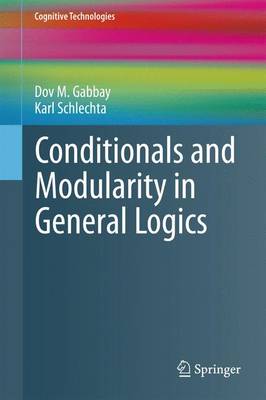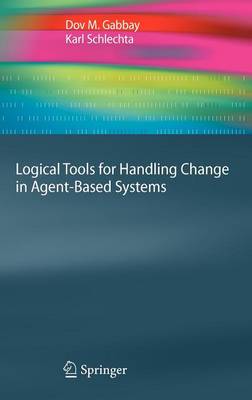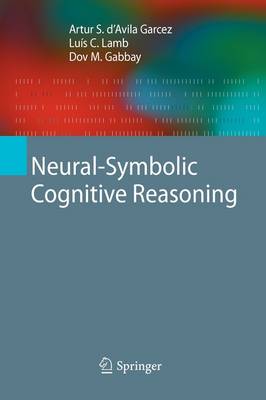Cognitive Technologies
5 total works
Conditionals and Modularity in General Logics
by Dov M. Gabbay and Karl Schlechta
This text centers around three main subjects. The first is the concept of modularity and independence in classical logic and nonmonotonic and other nonclassical logic, and the consequences on syntactic and semantical interpolation and language change. In particular, we will show the connection between interpolation for nonmonotonic logic and manipulation of an abstract notion of size. Modularity is essentially the ability to put partial results achieved independently together for a global result. The second aspect of the book is the authors' uniform picture of conditionals, including many-valued logics and structures on the language elements themselves and on the truth value set. The third topic explained by the authors is neighbourhood semantics, their connection to independence, and their common points and differences for various logics, e.g., for defaults and deontic logic, for the limit version of preferential logics, and for general approximation.
The book will be of value to researchers and graduate students in logic and theoretical computer science.
Revision, Acceptability and Context
by Dov M. Gabbay, Odinaldo T. Rodrigues, and Alessandra Russo
There are three key elements to the book's approach. Firstly, the methodology of logic by translation. A specific instance of this is the idea of revision by translation. Revision for a foreign logic is done via its translation into a well-known logic, usually classic logic. Secondly, the technique of meta-level/object-level movement, where we bring some operation defined at the meta-level of a logic into its object level. In this book, we bring the operation of deletion to the object level. Finally, through Labelled Deductive Systems, we use the context of the revision to finetune its operation and illustrate the idea through the presentation of various algorithms.
The book is suitable for researchers and postgraduates in the areas of artificial intelligence, database theory, and logic.
Logical Tools for Handling Change in Agent-Based Systems
by Dov M. Gabbay and Karl Schlechta
Agents act on the basis of their beliefs and these beliefs change as they interact with other agents. In this book the authors propose and explain general logical tools for handling change. These tools include preferential reasoning, theory revision, and reasoning in inheritance systems, and the authors use these tools to examine nonmonotonic logic, deontic logic, counterfactuals, modal logic, intuitionistic logic, and temporal logic.
This book will be of benefit to researchers engaged with artificial intelligence, and in particular agents, multiagent systems and nonmonotonic logic.
Neural-Symbolic Cognitive Reasoning
by Artur S. D'Avila Garcez, Luis C. Lamb, and Dov M. Gabbay
Humans are often extraordinary at performing practical reasoning. There are cases where the human computer, slow as it is, is faster than any artificial intelligence system. Are we faster because of the way we perceive knowledge as opposed to the way we represent it?
The authors address this question by presenting neural network models that integrate the two most fundamental phenomena of cognition: our ability to learn from experience, and our ability to reason from what has been learned. This book is the first to offer a self-contained presentation of neural network models for a number of computer science logics, including modal, temporal, and epistemic logics. By using a graphical presentation, it explains neural networks through a sound neural-symbolic integration methodology, and it focuses on the benefits of integrating effective robust learning with expressive reasoning capabilities.
The book will be invaluable reading for academic researchers, graduate students, and senior undergraduates in computer science, artificial intelligence, machine learning, cognitive science and engineering. It will also be of interest to computational logicians, and professional specialists on applications of cognitive, hybrid and artificial intelligence systems.
This text offers an extension to the traditional Kripke semantics for non-classical logics by adding the notion of reactivity. Reactive Kripke models change their accessibility relation as we progress in the evaluation process of formulas in the model. This feature makes the reactive Kripke semantics strictly stronger and more applicable than the traditional one. Here we investigate the properties and axiomatisations of this new and most effective semantics, and we offer a wide landscape of applications of the idea of reactivity. Applied topics include reactive automata, reactive grammars, reactive products, reactive deontic logic and reactive preferential structures.
Reactive Kripke semantics is the next step in the evolution of possible world semantics for non-classical logics, and this book, written by one of the leading authorities in the field, is essential reading for graduate students and researchers in applied logic, and it offers many research opportunities for PhD students.




